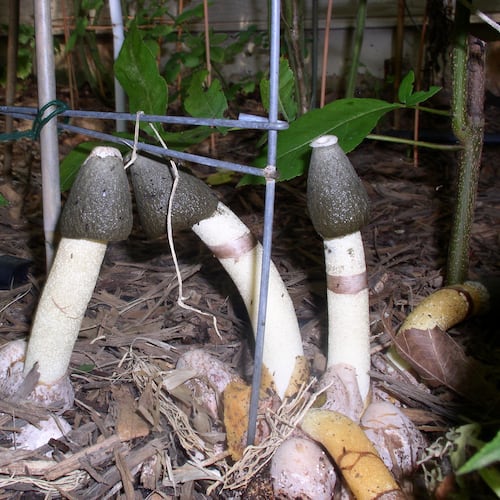Wile E. Coyote can be fairly amusing on those old "Road Runner" cartoons, but coyotes in metro Atlanta neighborhoods are serious business. While there's very little chance a coyote would carry rabies or attack humans, they can raid garbage cans and have even been known to harm or eat small household pets in metro Atlanta. The latest report of a coyote attacking a pet dog in the Atlanta area came from Roswell, though the mid-size dog survived. A Cobb woman's 85-pound retriever was attacked by a coyote in August 2018 while the two were walking in River Line Soccer Park.
How did we get to a place where coyotes are living in an area with an established MARTA, gleaming corporate headquarters and endless rows of luxury condos? There's no use being indignant, because humans pretty much did this to themselves, according to the Atlanta Coyote Project, co-founded in 2014 by scientists from Berry College, Emory University and the University of Tennessee Chattanooga.
"The presence of red wolves in the southeast is historically what kept out coyotes," it said. "Once we humans wiped out red wolves, it created a void that the coyote easily filled on its own. This has happened gradually over the past 50-plus years."
Coyotes have been sighted in every Georgia county, becoming widespread throughout the state in the last 20 years. Now that they're here and we're here, how can you protect your pets? Basically, provide a pet and household environment that discourages coyotes from coming close (no anvil required.) You'll have to sort through some myths and conflicting information, but once you're past that, coyote control tactics are fairly straightforward. Here's how to keep coyotes in their place when you live in metro Atlanta:
Know what coyotes look like. Think you've got coyotes? According to the ACP, you should be noting upright ears that are pointed. Also look for a bushy tail and a long slender snout, but don't worry too much about color. Between shedding and seasonal colors, coyotes in the Southeast might appear orange, red, tan, grey or even black. And while winter coats can make them look bigger, they ordinarily do not exceed 45 pounds and are more likely to be in the 25- to 40-pound range.
Relocation is not an option. It's not possible to trap local coyotes and move them elsewhere. For one thing, that's illegal in Georgia. For another, any time you remove an established pair of coyotes from their territory, new ones will move in. And while Georgia has offered a bounty for killing coyotes in the past, experts like the Humane Society of the United States warn against trying to get rid of coyotes that way.
"Shoot or poison coyotes and you will have just as many again within a year or two," it says. "Kill one or both members of the alpha pair, the only one that normally reproduces, and other pairs will form and reproduce."
Understand coyote noises. The sounds can be eerie (or make you want to build a campfire and do some yowling, too), but coyote noises aren't particularly threatening in and of themselves. Instead, "coyotes bark, howl", and yip to stay in touch with family members and to announce the boundaries of their territory to rival groups," according to the ACP. "They have an uncanny ability to modulate the frequency and pitch of their vocalizations, which often makes the group sound larger in size than it actually is."
See things from the coyote's perspective. If you've seen or know about a coyote in your neighborhood, chances are the animal has taken great pains to identify the territory as its own. This is crazy, but you have a vested interest in helping a single coyote pair keep that territory to themselves so that they'll keep out intruder coyotes and also keep the vermin population at bay. Know that it's extremely rare for coyotes to carry rabies or attack humans. And you have much greater odds of being bitten by a dog than a coyote, especially since coyotes usually hunt at night.
Look for other signs coyotes are in the area. Tracks and poop (also known as scat) are the best indicators that coyotes are in the area.
"Coyote paw prints are generally oval shaped and show claw marks from only the two central claws," ACP noted. "The front paws are larger and have bigger footpads than the rear paws. Coyote scat is usually found along pathways or trails. It tends to be tapered at the ends, contains fur, small bone fragments, and/or seeds, and generally has little odor"
The ACP website features photos that will give you a good idea of what coyote feces and paw prints look like.
In most cases, though, it's probably best to act as if you do have coyotes in the area. The preventive steps are fairly simple and just an extension of responsible pet ownership, so it's easier to go through the motns instead of having to worry if a coyote has killed your pet. Here are the best tactics, according to the ACP:
- Never feed coyotes
- Don't let coyotes have access to food around your home. Particularly secure compost and trash cans.
- Don't leave uneaten pet food outside or store unprotected bags of food outdoors.
- Clean and store grills when you're not using them
- Maintain your yard, wood piles and sheds in ways that discourage small mammals, which coyotes love to eat
- Dispose of road kill or other dead animals properly
About the Author
Keep Reading
The Latest
Featured
